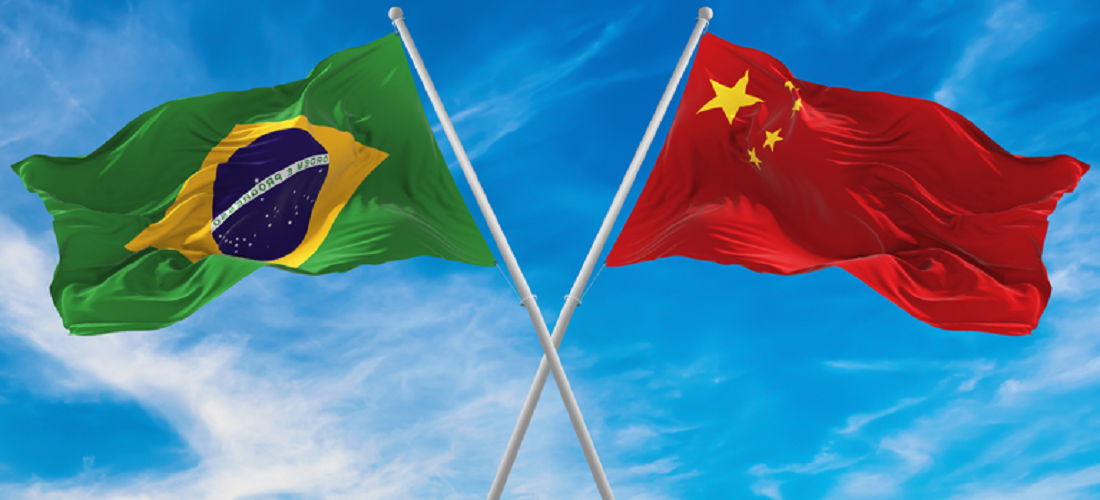
Xi Jinping to promote Belt and Road during visit to Brazil
May, 07, 2024 Posted by Sylvia SchandertWeek 202419
Chinese President Xi Jinping began his first visit to Europe in five years in France on Monday (6), in search of “strategic” opportunities and to push for a new global order. He will then go to Serbia and Hungary.
At the same time, the Chinese Foreign Ministry is working to prepare Xi Jinping’s visit to Brazil in November, which could take place before or after his participation in the G20 leaders’ summit scheduled for November 18-19 in Rio de Janeiro. Mr. Xi has already been to Brazil in 2014 and 2019, and also before becoming president.
The bilateral visit has not yet been officially decided, but the intention is clear. The plan is for a state visit to Brasília, characterized by the highest degree of formality and pomp, and a sign of the importance of bilateral relations. Last year, bilateral trade hit a record high and investment, although down, remains intense.
The expectation is that the meeting of Xi Jinping and Brazilian President Lula will bring “significant results,” which for the world’s second-largest economy behind the U.S. means several concessions on Brazil’s part.
This time, China seems determined to finally get Brazil on board with the Belt and Road, Beijing’s most important soft power strategy. The so-called “project of the century” was launched by Xi Jinping in 2013 to finance global infrastructure to further connect China to the rest of the world, promote Chinese exports, reduce its overcapacity, and increase its global influence.
China is Brazil’s top trading partner. Please refer to the chart below to see more details on the container trade between the two countries. The data used below was derived from DataLiner.
Exports & Imports | Brazil x China | Jan 2024 – Mar 2024 | TEUs
Source: DataLiner (click here to request a demo)
China has already disbursed around $1 trillion to developing countries through this initiative to strengthen relations with other countries. Belt and Road has always been a way of attracting friends and being able to influence and persuade others to benefit from its non-Western version of economic development, for example. Beijing has also expanded the possibility of securing supplies of raw materials, seeking out new clients, and solidifying relationships that can be used bilaterally or in the multilateral forum.
These objectives become even more relevant in the midst of growing geopolitical friction with the U.S. The Belt and Road project has faced turbulences due to the financial squeeze it has caused in several countries. Loans and construction have declined during the pandemic. The program has been reformed, has new impetus and now prioritizes not-so-big agreements and includes sectors such as green energy and healthcare.
During Mr. Lula’s visit to Beijing in April 2023, the Chinese government repeated its demand for Brazil to join the initiative, which already includes 150 countries, 22 of them in Latin America. In the end, a joint statement mentioned the search for synergies between the two countries. “Brazil and China expressed interest in examining synergies between Brazil’s development policies and investment programs, including South American integration efforts, and China’s development policies and international initiatives, including the Belt and Road Initiative.”
Now, during Xi Jinping’s visit in November, Beijing wants to move forward. President Lula’s international advisor, Ambassador Celso Amorim, told Valor last year, before his trip to Beijing, that “there is no reason for Brazil not to join” the Chinese initiative.
The question is what Brazil will get in return to justify joining the Chinese plan, which would represent international recognition of China as an actor capable of influencing global governance, amid resistance from the U.S. and Europe.
The fact is, as one attentive observer notes, that China is the mainstay of Brazilian foreign trade and that having a good relationship with Beijing involves “swallowing its pride.” And this even involves incorporating certain Chinese philosophical terms into the discussion about the new global order, such as “shared future” or “true multilateralism.”
On a recent visit to Beijing, Gleisi Hoffmann, president of the Workers’ Party (PT), President Lula’s party, did not hide her enthusiasm for the Chinese development model after a theoretical seminar with members of the Chinese Communist Party. In an interview with newspaper O Globo reporter Marcelo Ninio, she called China’s one-party system “effective democracy.”
On Monday in Paris, Xi Jinping made a visit that is being closely monitored by his partners. In France’s case too, the bilateral relationship is increasingly asymmetrical in Beijing’s favor. President Emmanuel Macron rejects the notion of equidistance between China and the U.S., insisting that France is one of the Americans’ oldest allies. But Paris wants to have options open, with a third way in the midst of the current global chaos.
In an editorial, Le Monde notes that France has no interest in being sensitive to China’s “flattery.” As for Mr. Macron, since 2019 he has systematically associated other European leaders with his meetings with Xi Jinping, recognizing that only a united Europe has any chance of making itself understood in Beijing in some areas, not all.
Overall, Europe is split on how the European Union should respond to trade tensions with China. France advocates stronger measures to protect the bloc against cheap Chinese products, while Germany takes a more cautious approach to avoid retaliation against its companies.
Officially, the EU defines China as a partner for cooperation, an economic competitor, and a systemic rival.
Source: Valor Internacional
-
Economy
Mar, 07, 2025
0
Brazil’s Economy Grows 3.4% in 2024, Marking Strongest Expansion Since 2021
-
Ports and Terminals
Feb, 01, 2022
0
The signing of a new work order kickstarts Suape’s master plan review
-
Ports and Terminals
Dec, 20, 2022
0
Itapoá breaks record for cross docking exports in 2022
-
Oil and Gas
Jun, 13, 2019
0
Brazil and Bolivia make an agreement on gas supply

